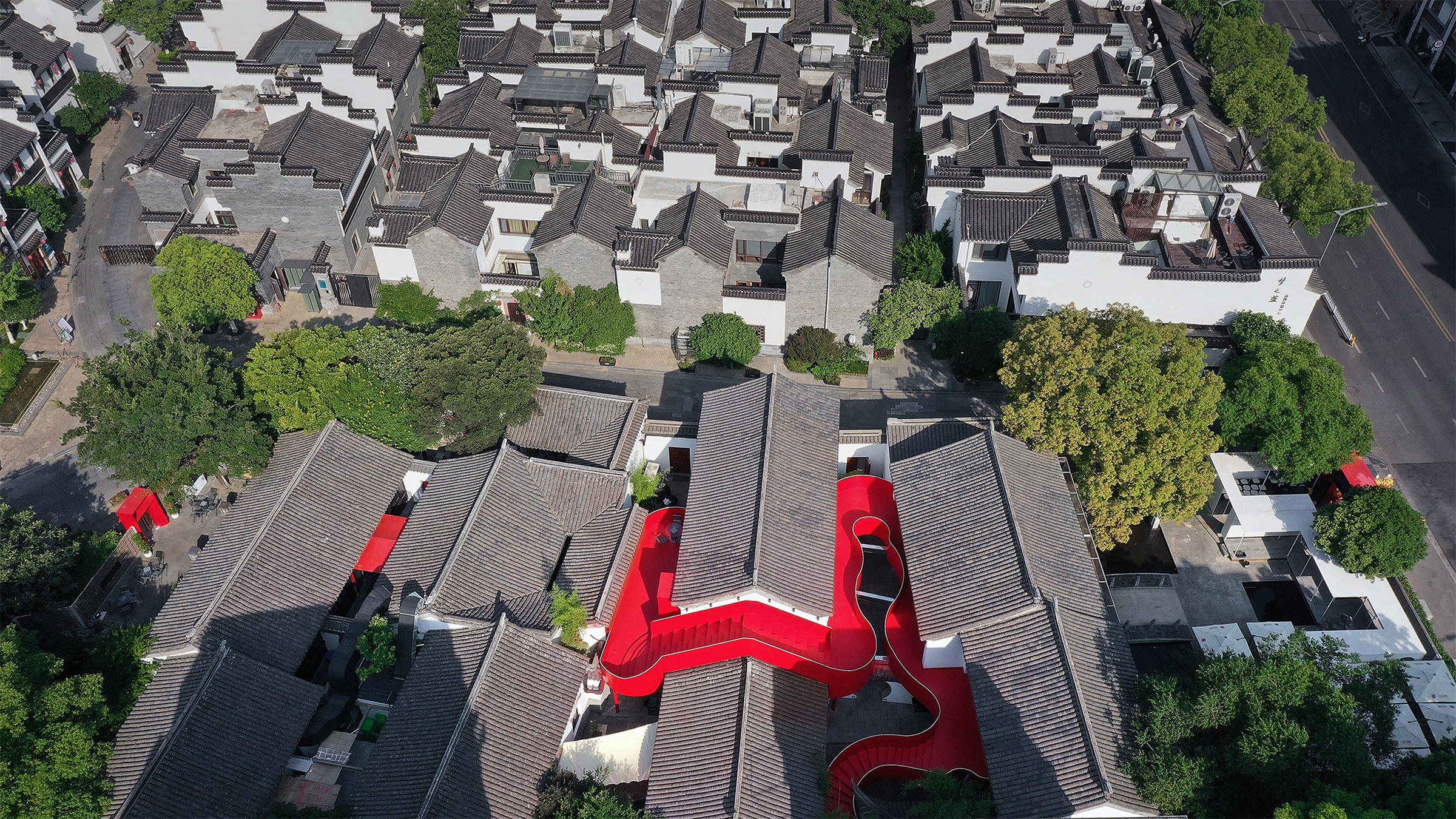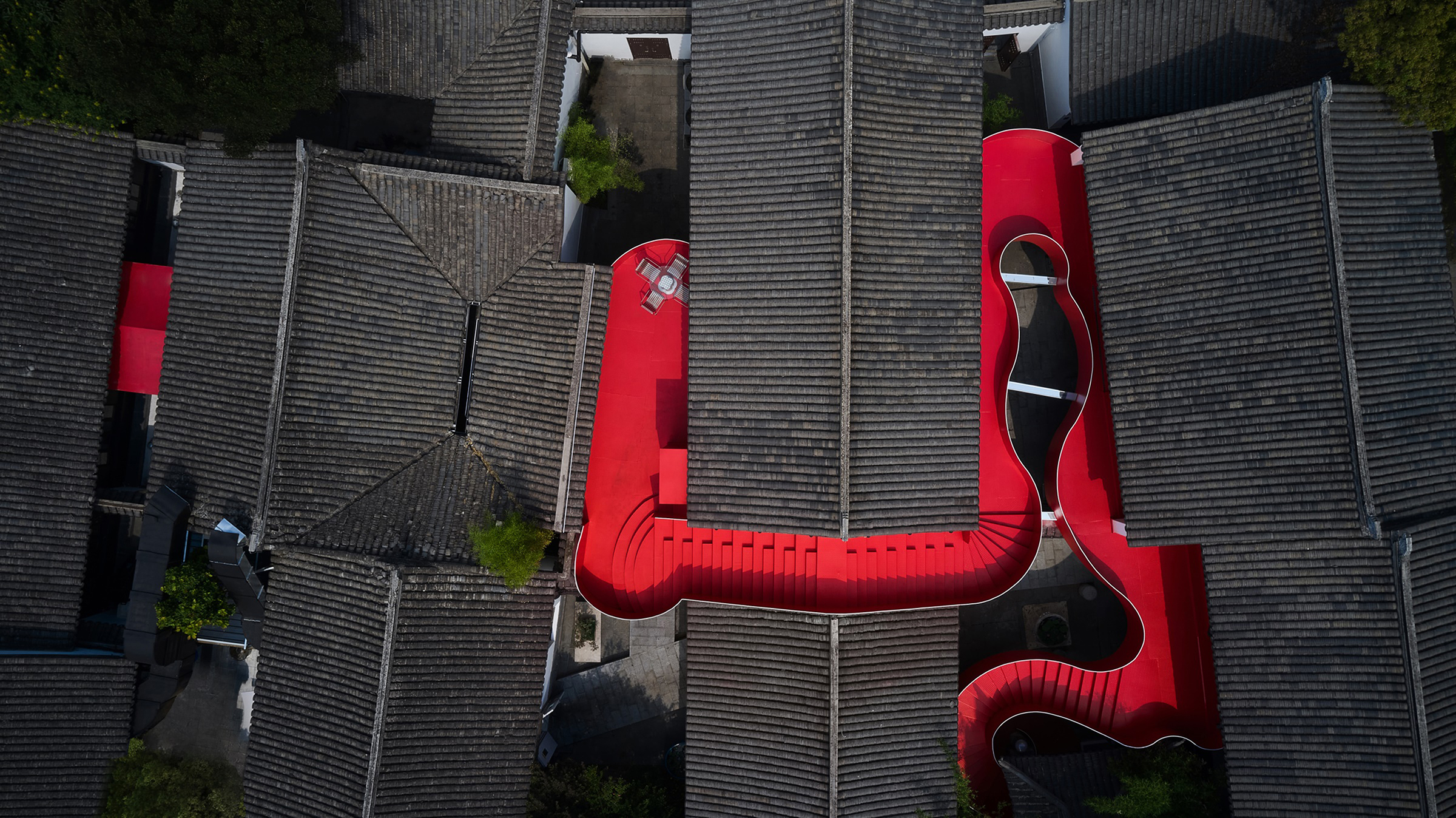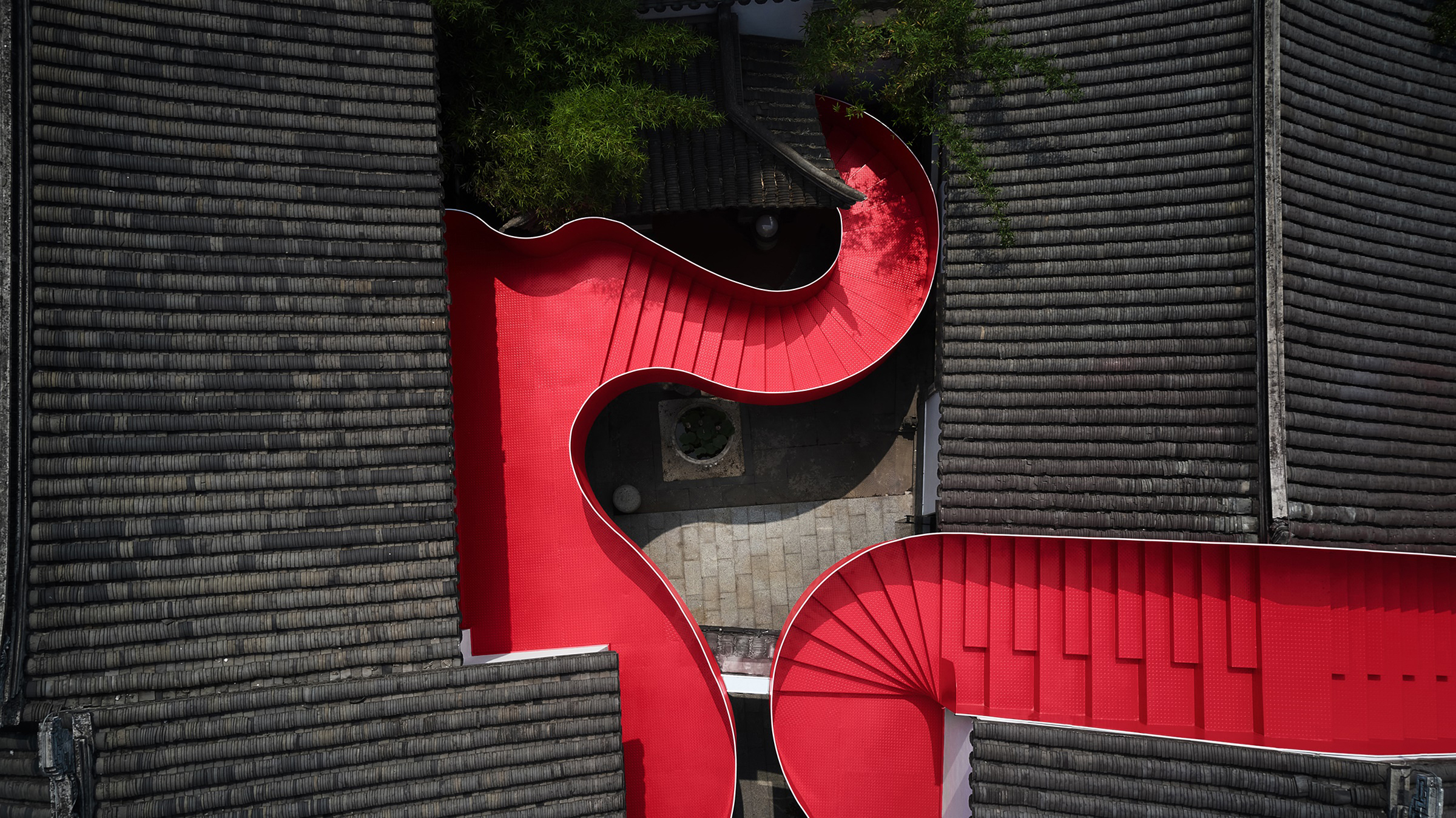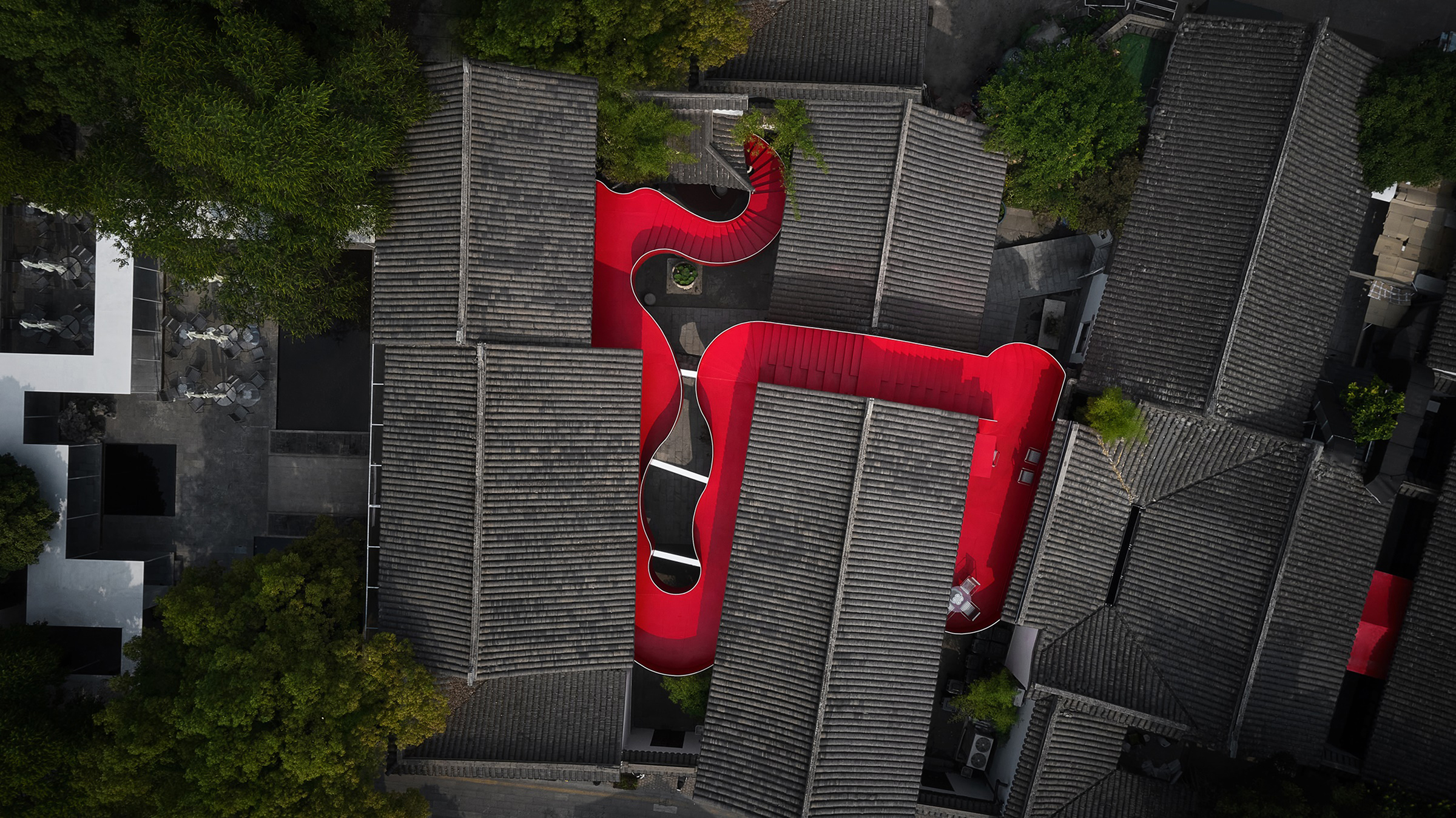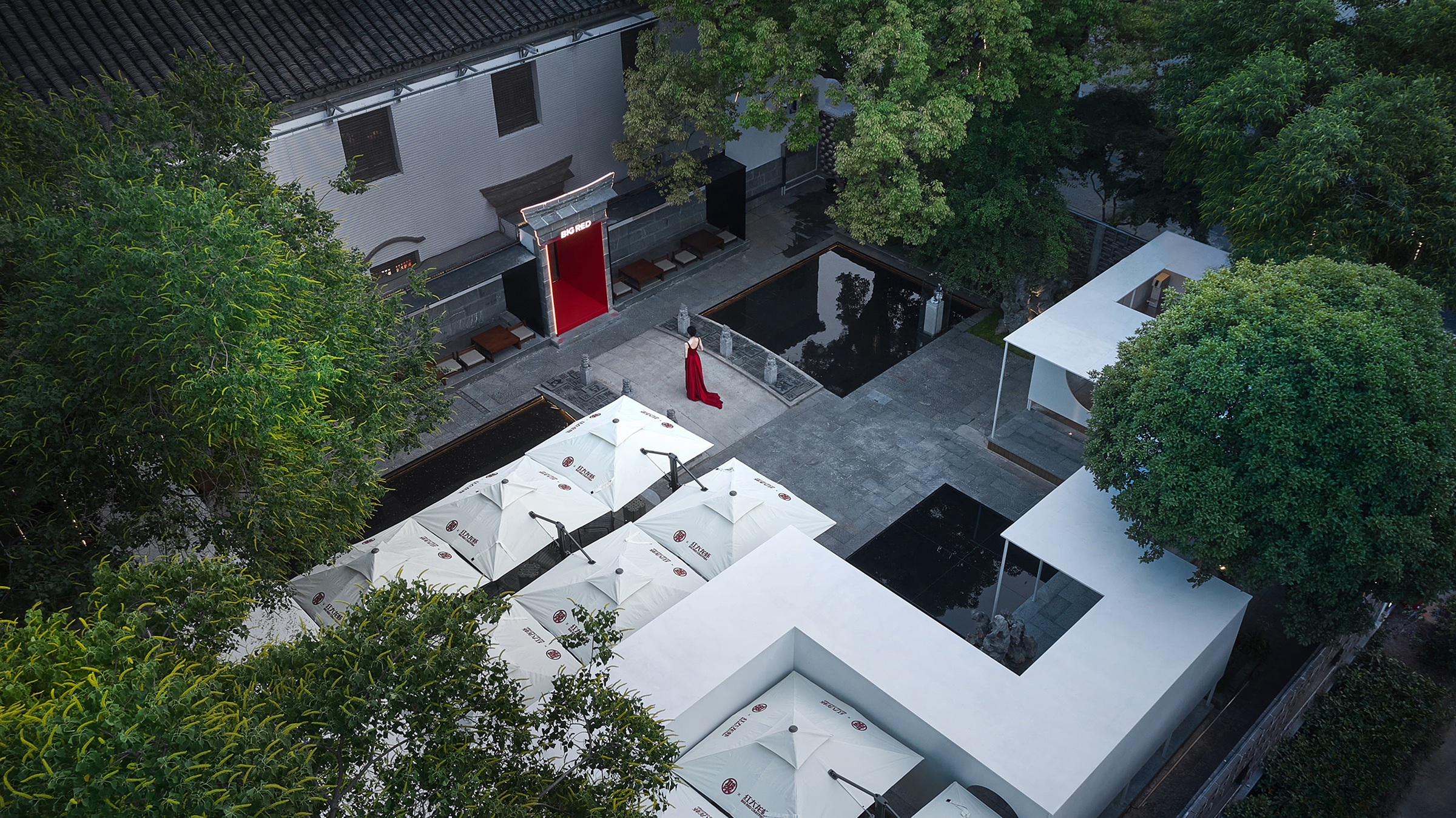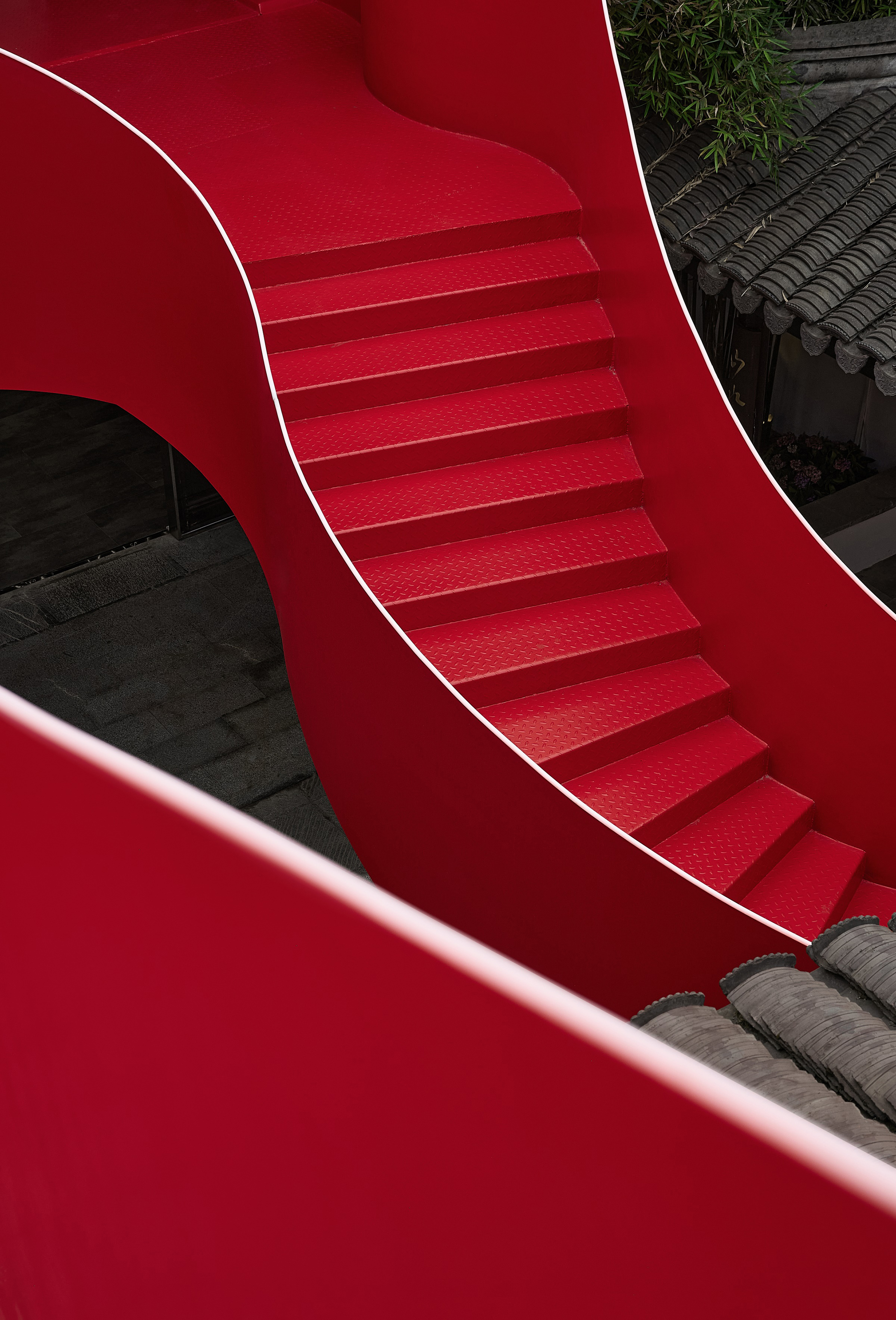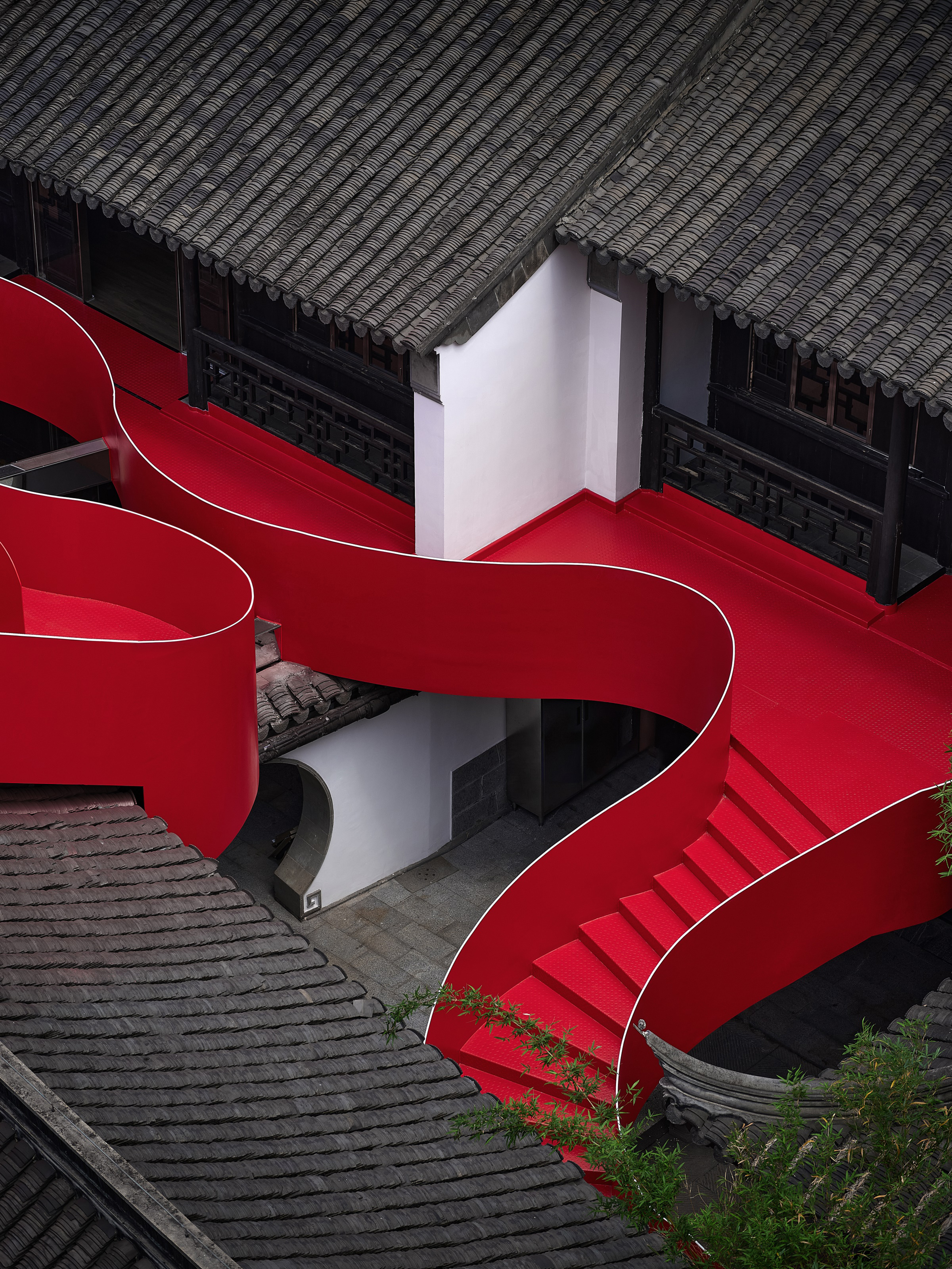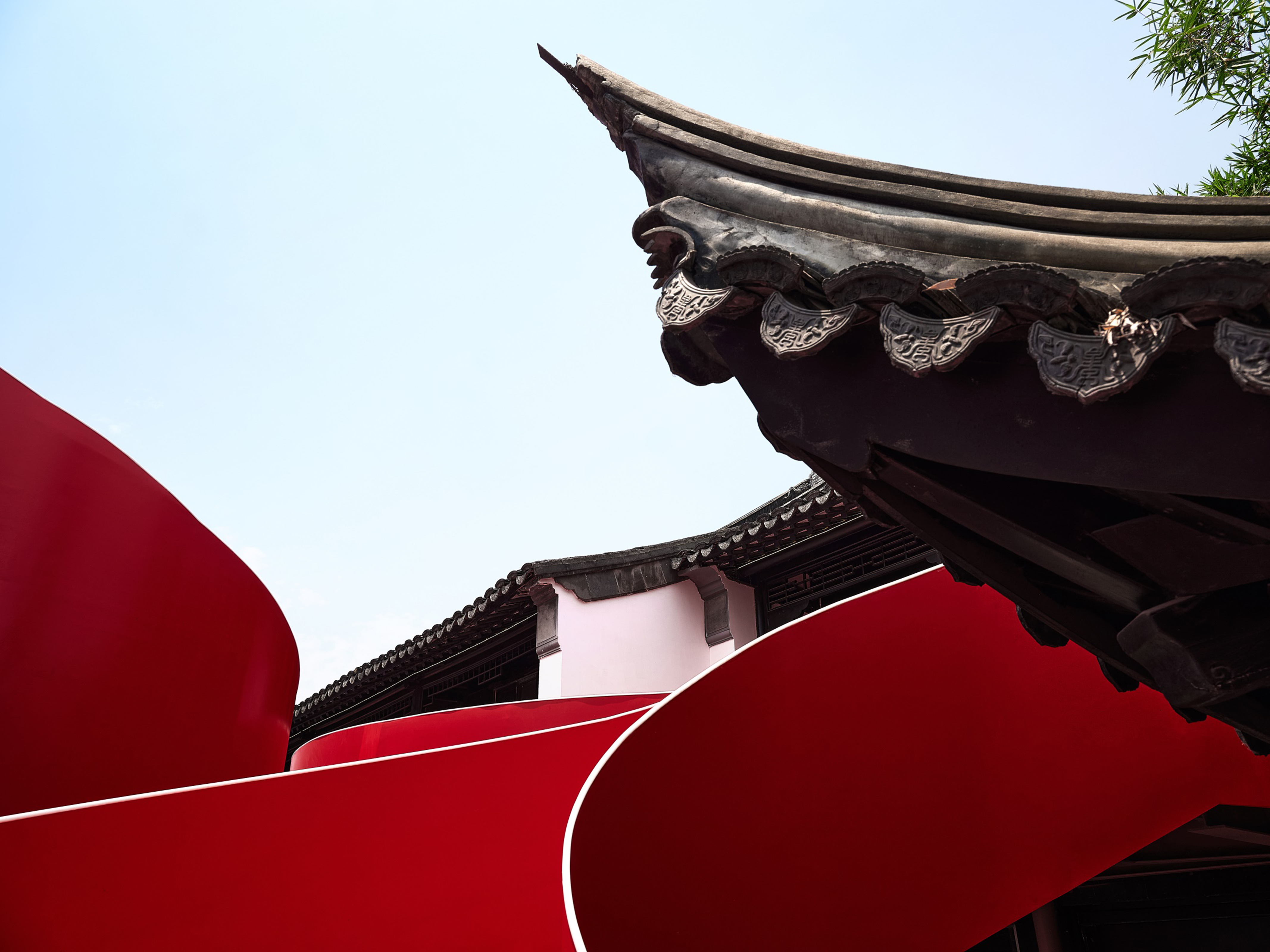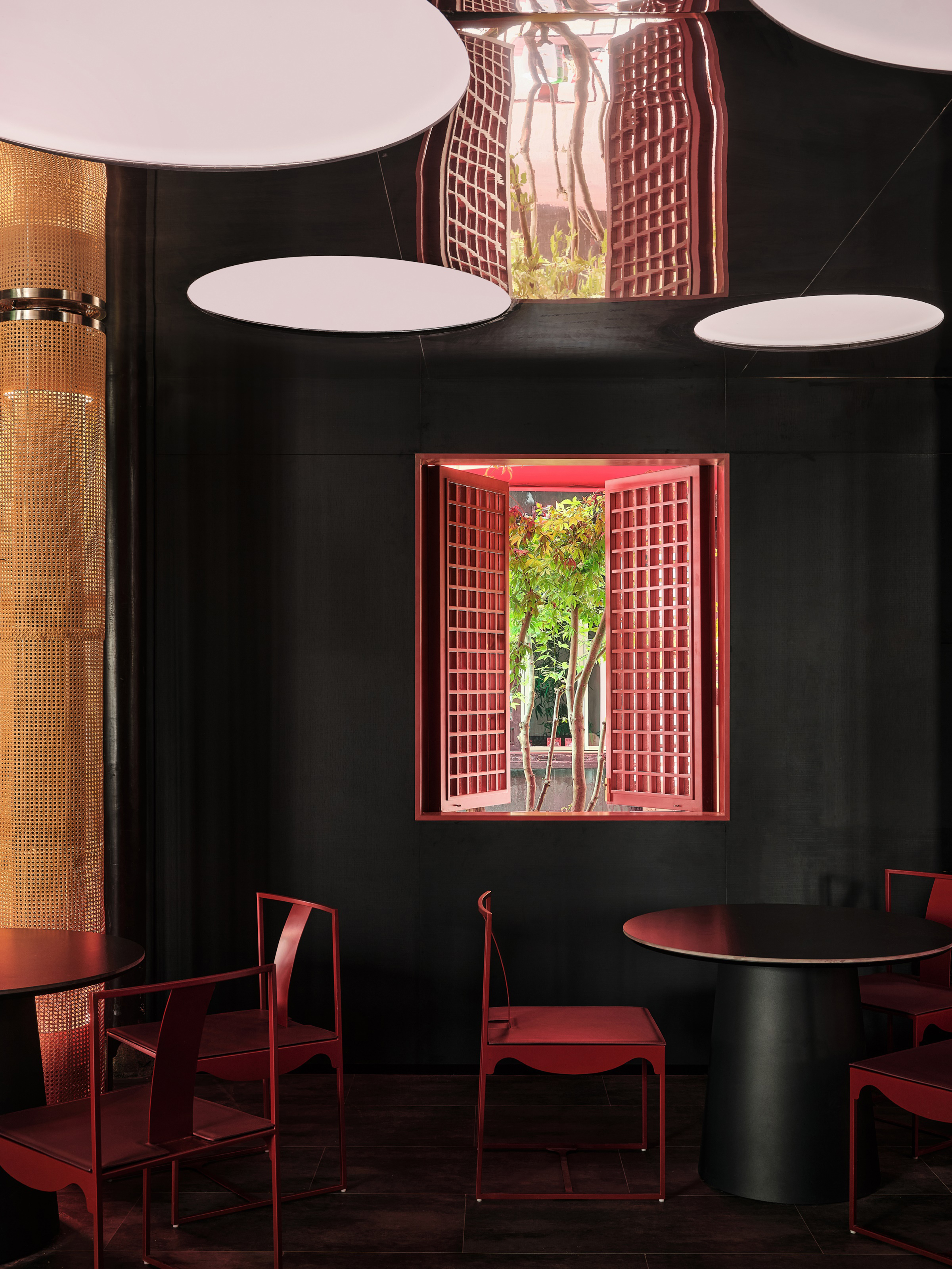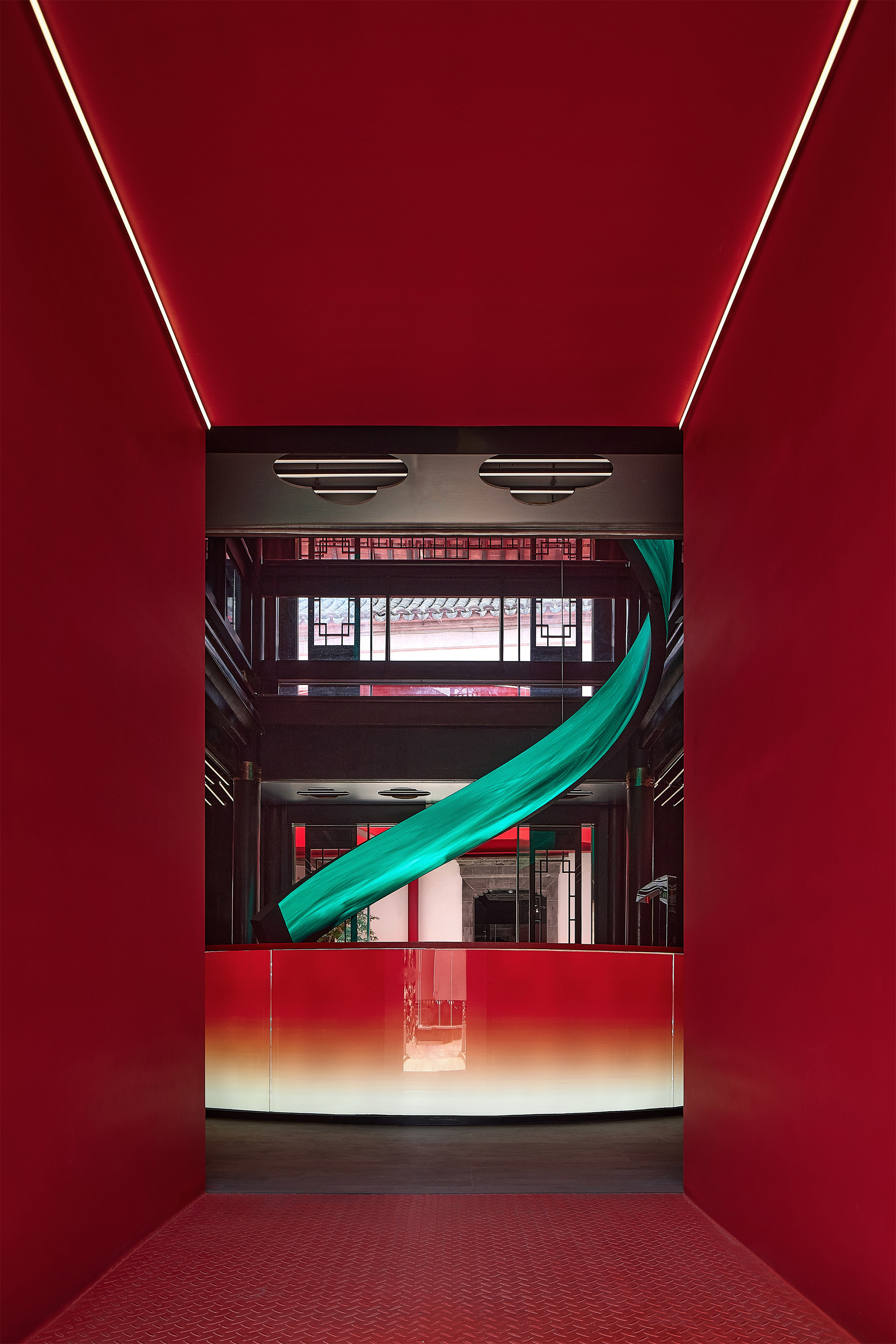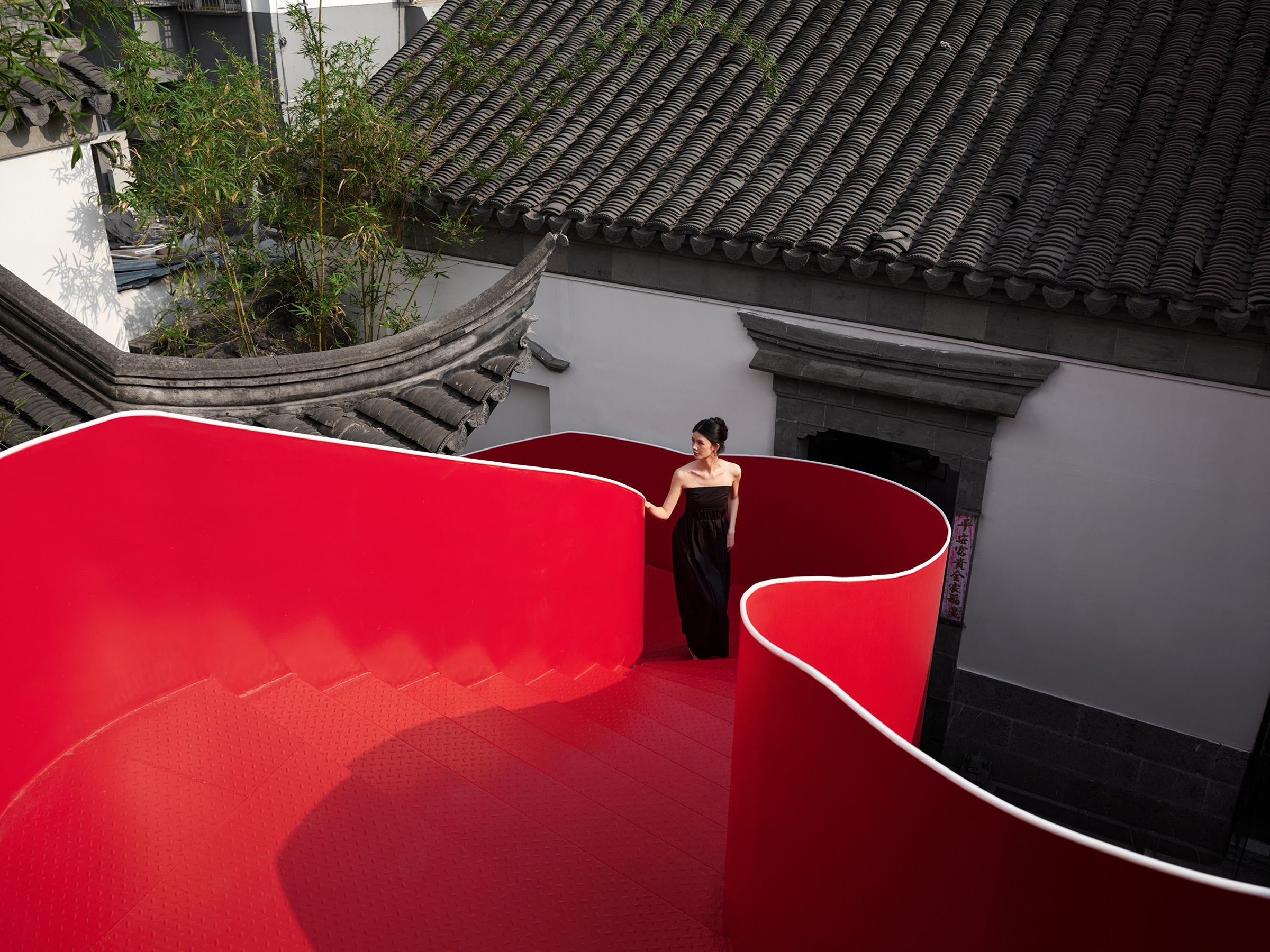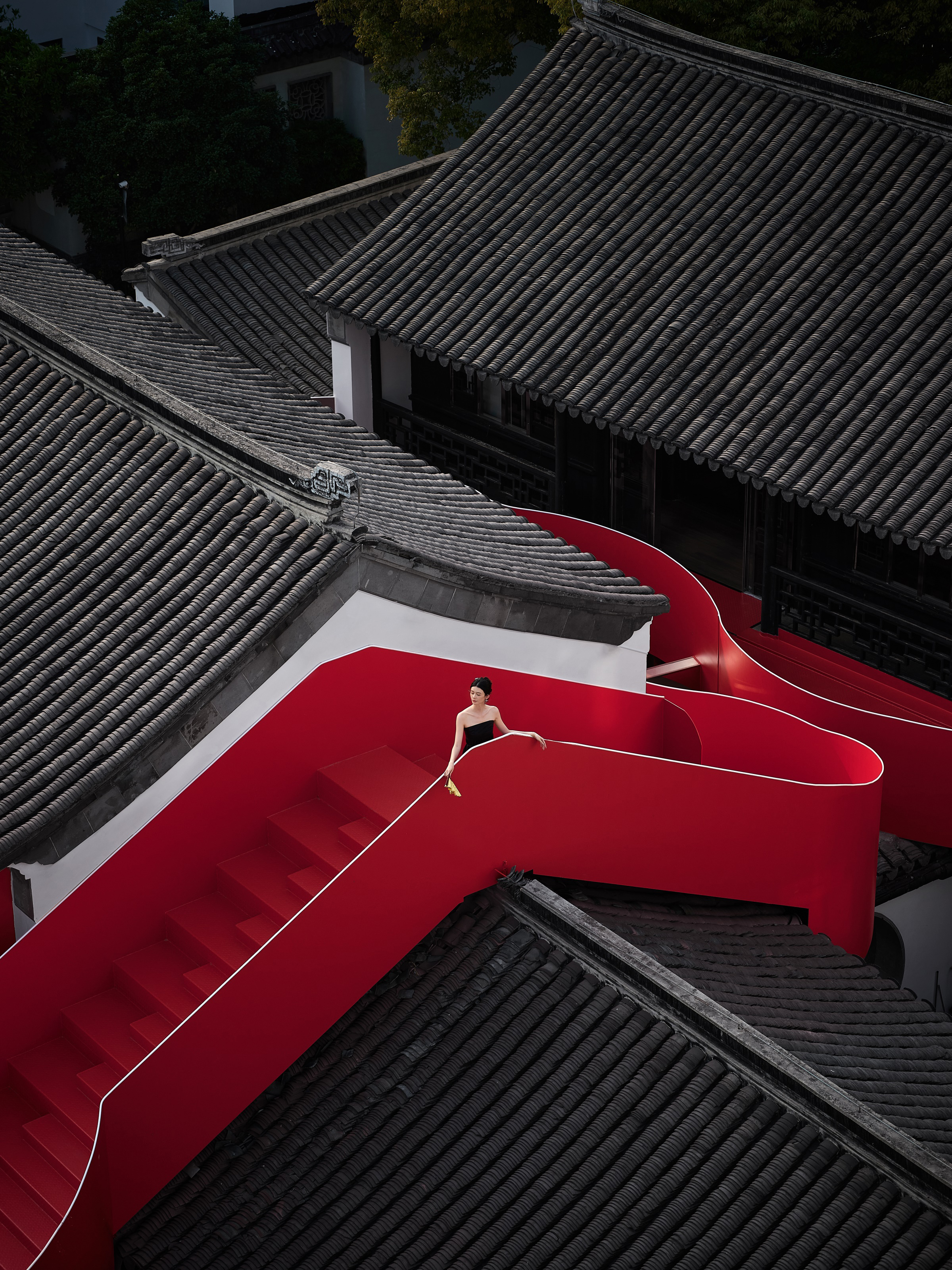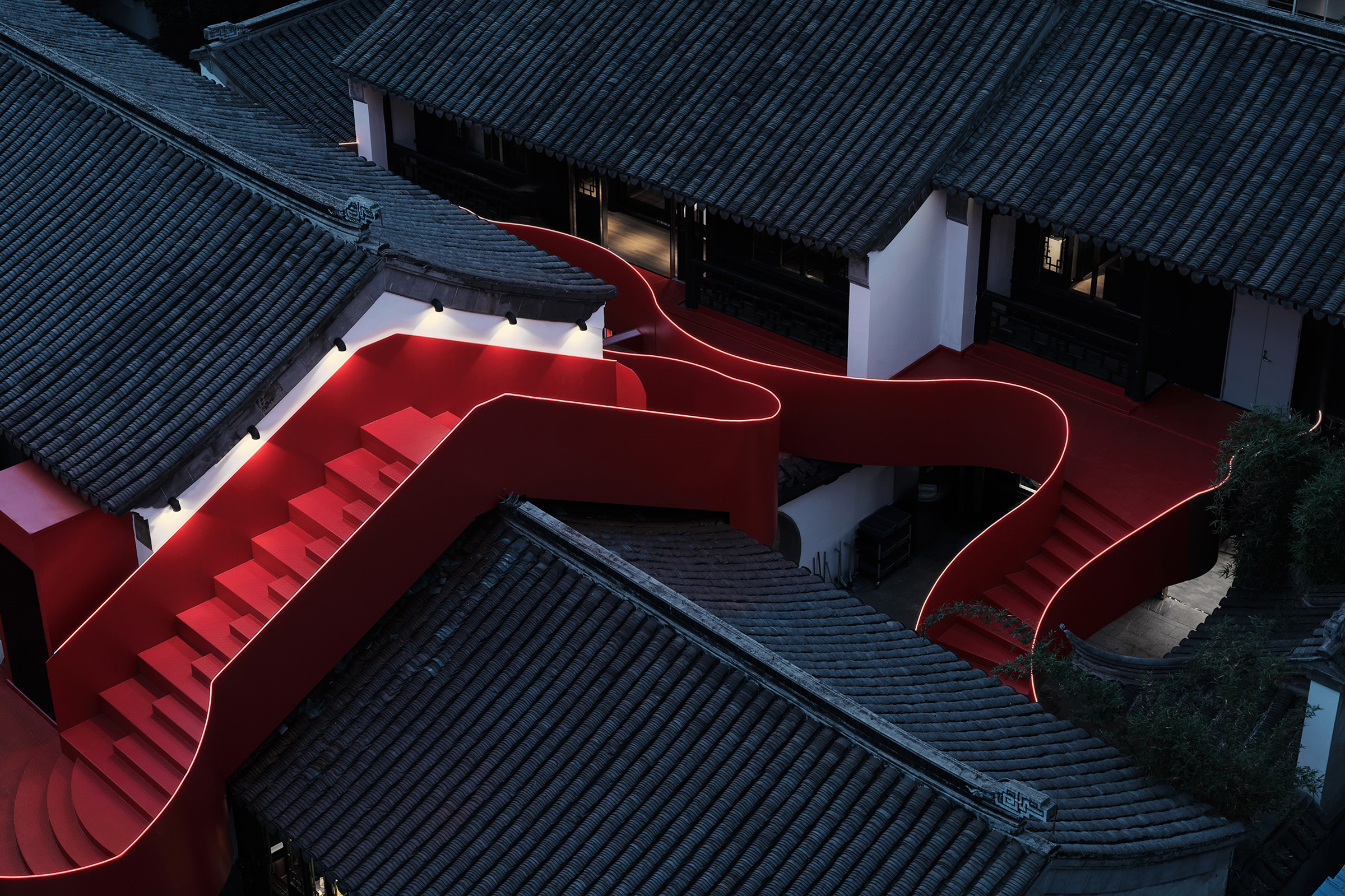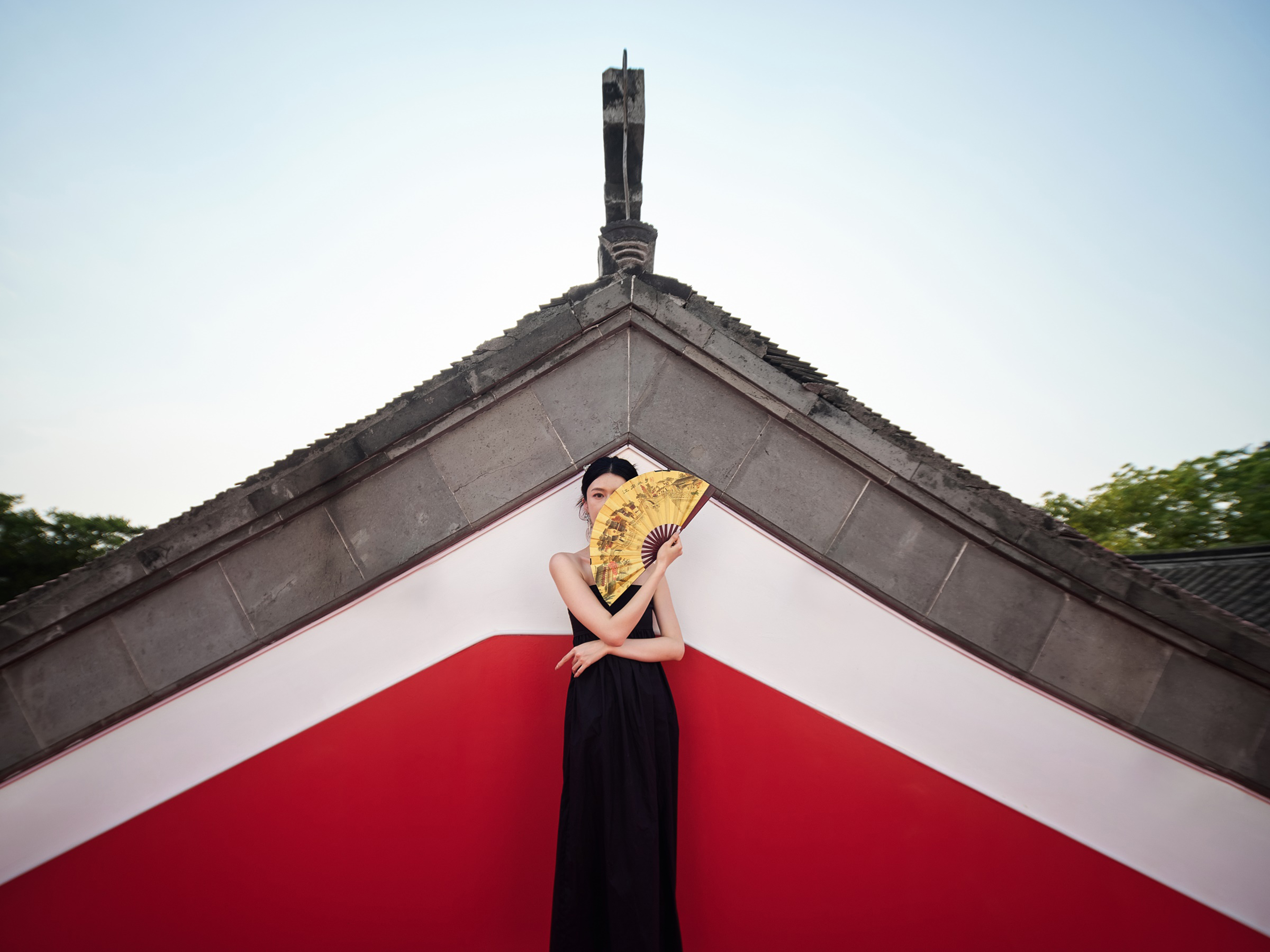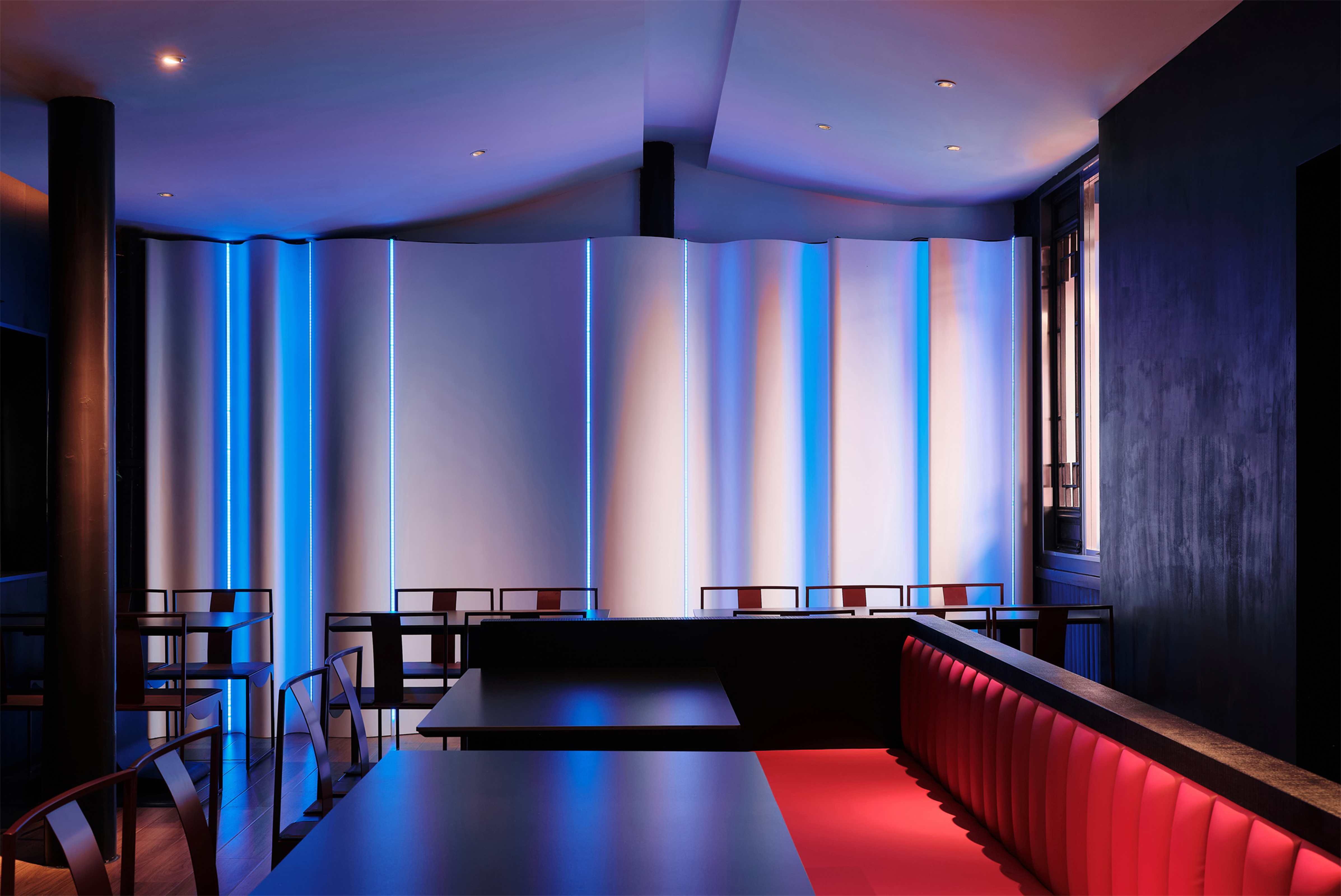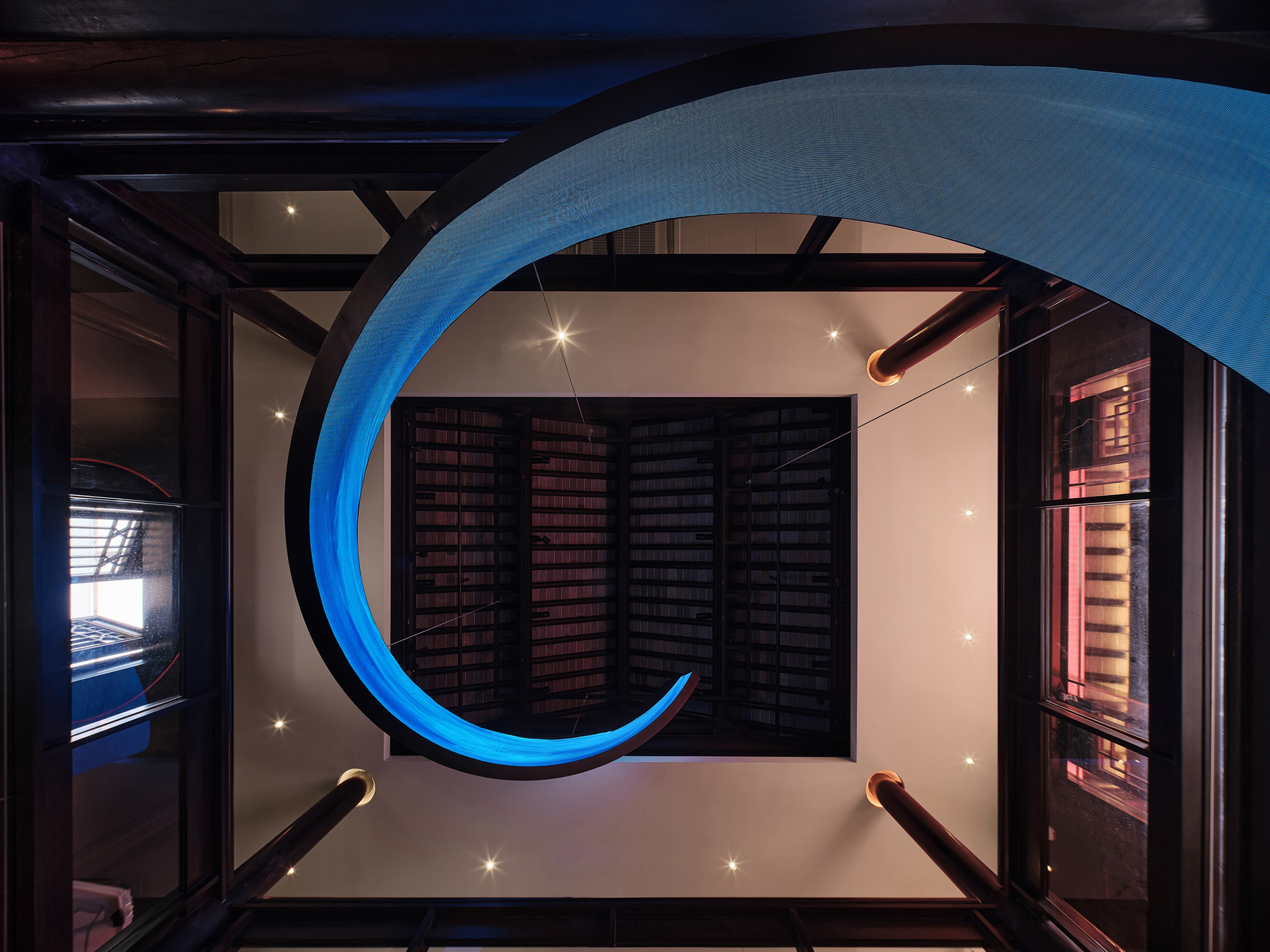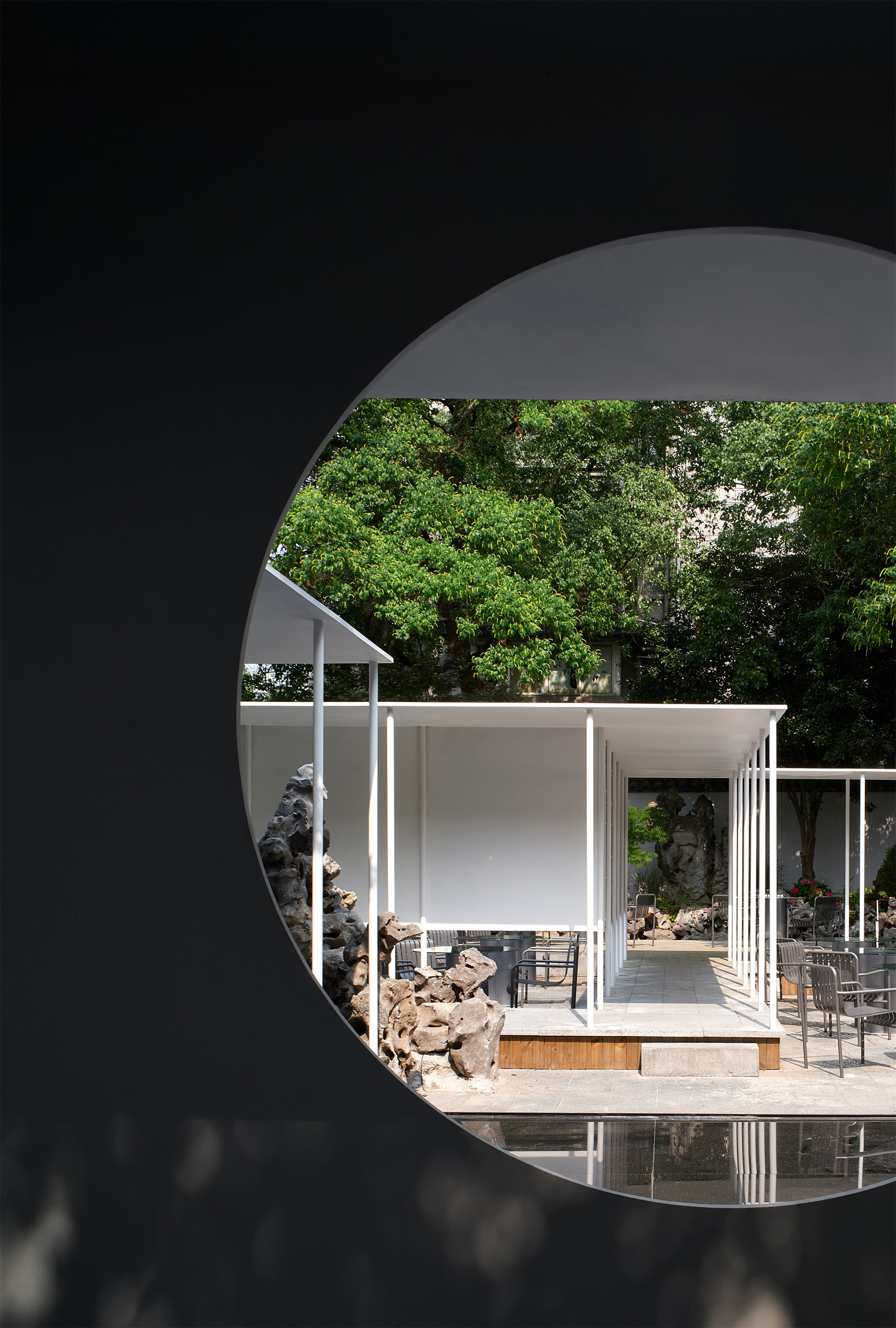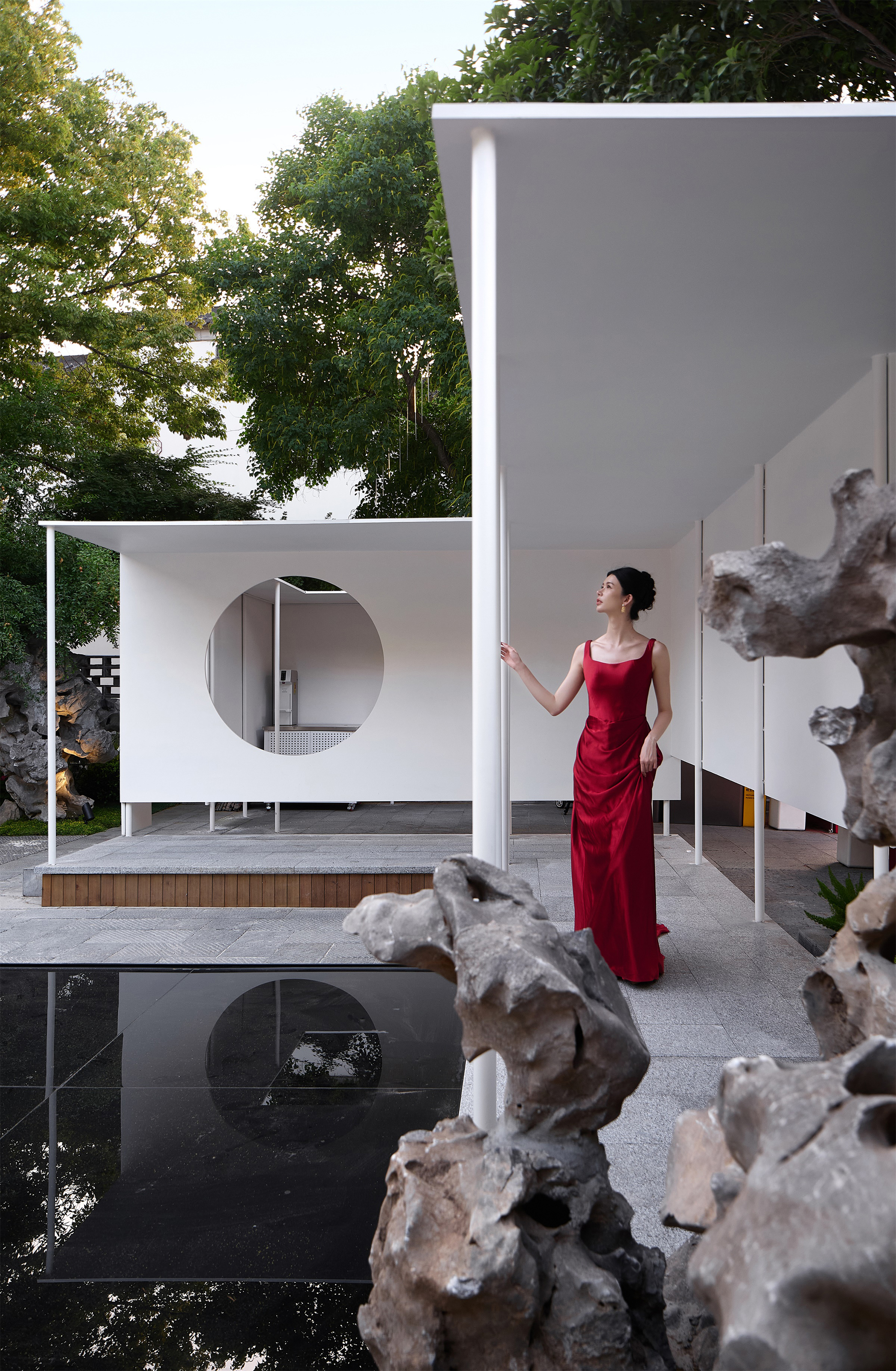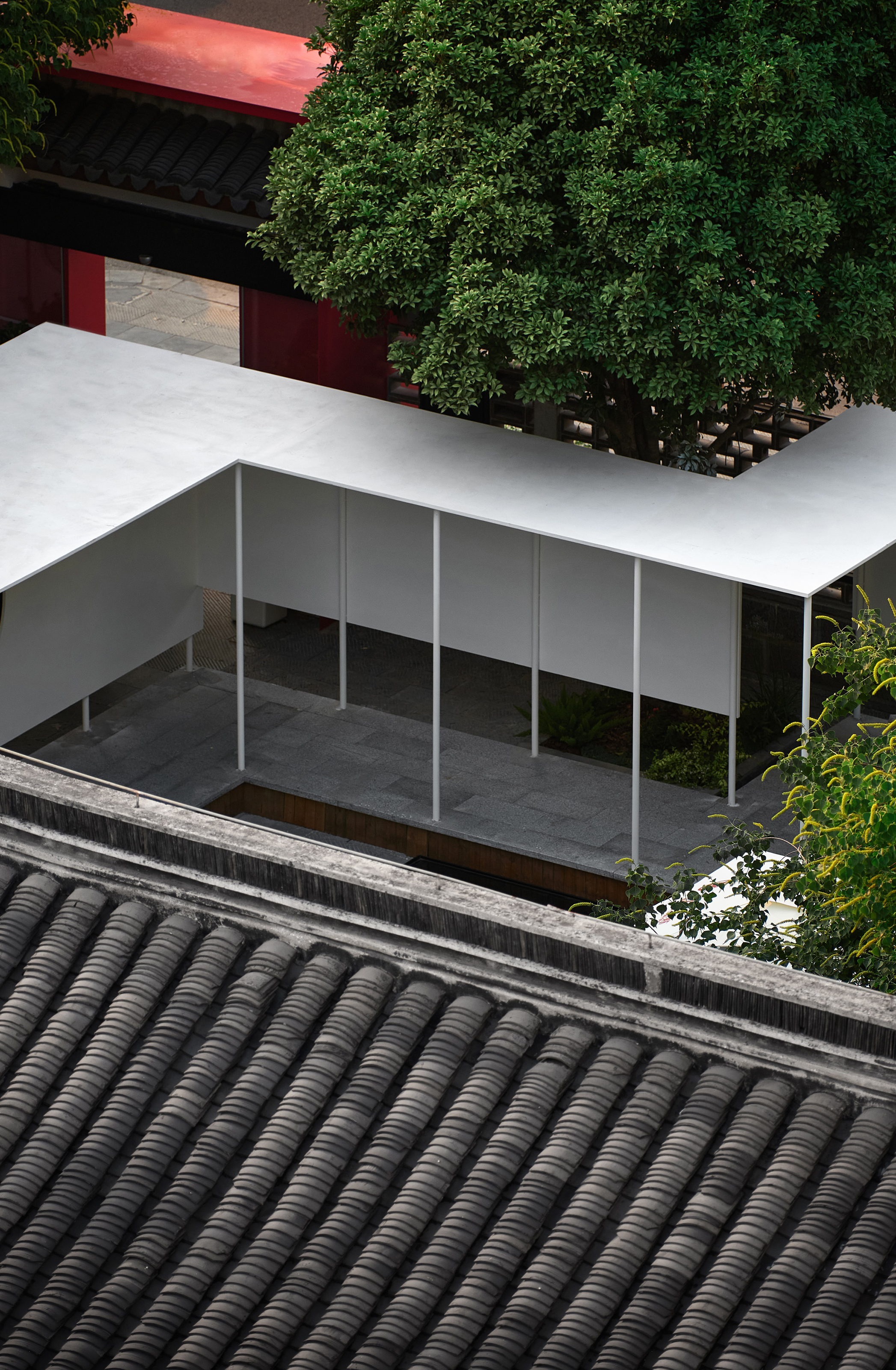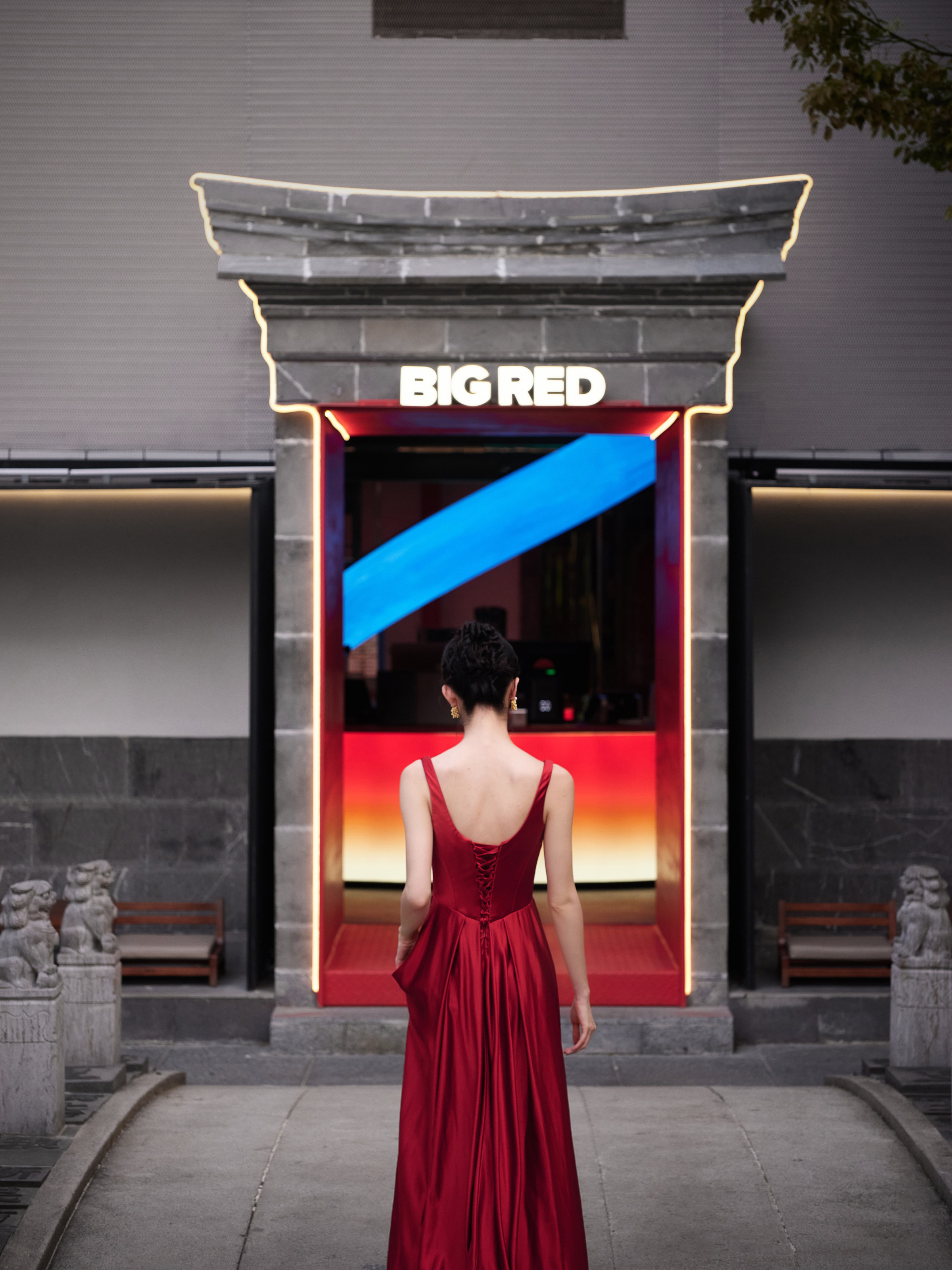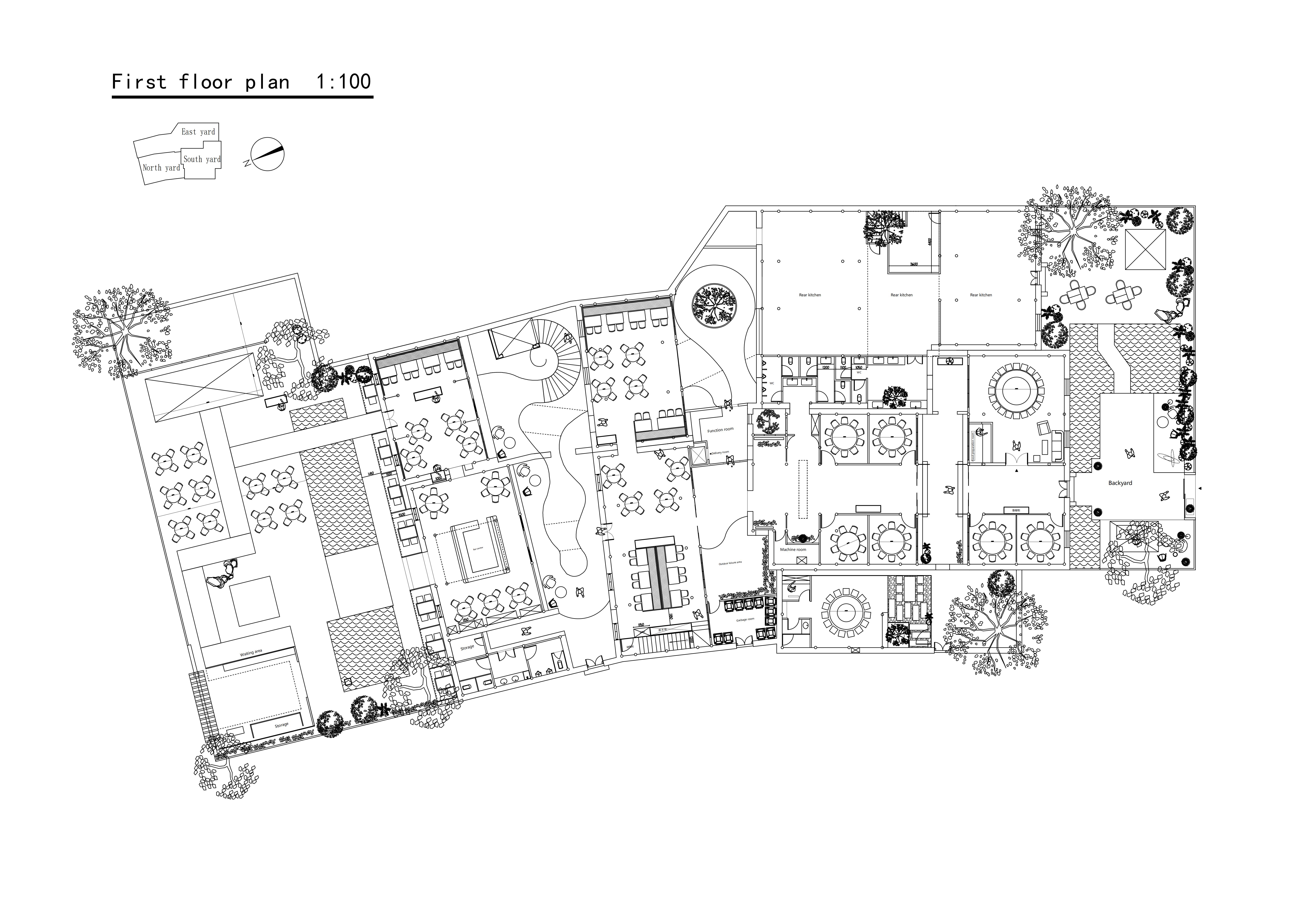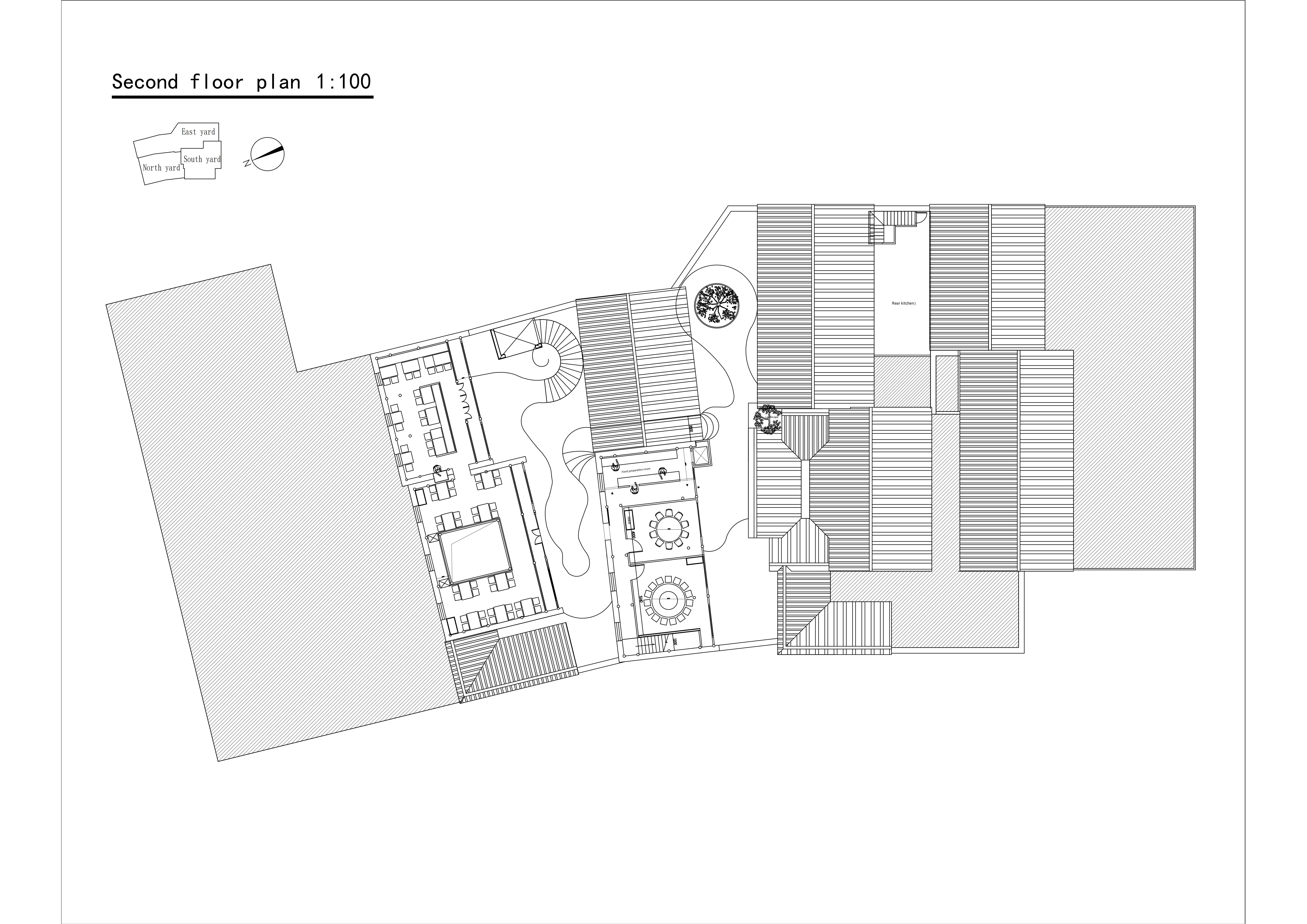说明:
此项目位于南京秦淮河岸,这里浸润着代代老城南传统的生活气息,古雅的建筑群可窥见昔日繁华,弥漫着底蕴与烟火交织的独特氛围。
This project is situated on the banks of Nanjing's Qinhuai River, immersed in the traditional lifestyle that has characterized this southern city for generations. The area's quaint architectural ensemble offers a window into its vibrant past and exudes an atmosphere rich with cultural depth and the lively essence of everyday life.
作为历史古迹设计改造项目,本案的任务是将此处占地面积2000平方米的旧址改造成小龙虾主题的餐饮商业空间。我们一如既往地遵循最大限度保护古迹,加强建筑可持续的长期主义原则。
Tasked with transforming a 2,000 square meter site into a crayfish-themed dining and commercial space, this historic monument renovation project adheres steadfastly to principles of maximum preservation and sustainable, long-term architectural practice.
对于设计师而言,守护历史古迹或古老建筑的最佳方式不是供奉起来让人瞻仰和观赏,而是使人走进它、触摸它、使用它,让它成为生活的一部分,在新的功能场所重构历史空间的可能性和丰富性。
For designers, the optimal approach to safeguarding historical monuments or ancient buildings isn't through mere veneration but by making them accessible, tactile, and functional—integrating them into the fabric of daily life and exploring the potential for new uses and enriched experiences within these historical spaces.
我们建造了流线型钢结构楼梯贯穿一、二、三、四进整个场地,联通二层空间,如流水般将几座建筑的“孤岛”串联互通起来,成为整体。弧线的造型,犹如一条护城龙,蜿蜒在鳞次栉比的建筑群中,制造出强烈的视觉冲突。色彩应用方面,中国红不仅在黑白灰的屋宇间夺人眼球,同时点题“红大龙虾”的店招,将热情升腾的味觉体验视觉化,勾起宾客即将启程一段味觉之旅的美好想象。红色流线型楼梯在此处成为“新地标”和“打卡地”,为商家引流,创造额外的商业价值。
We constructed streamlined steel staircases that traverse from the first through the fourth levels, connecting the second-floor spaces and knitting together the buildings' isolated "islands" like a flowing river, thereby unifying the site. The staircases' sinuous forms, reminiscent of a protective dragon, weave through the dense architectural landscape, creating a striking visual contrast. The strategic use of Chinese red not only draws the eye amid the subdued tones of the surrounding structures but also accentuates the theme of "Big Red Crayfish" visually encapsulating the fervor of the taste experience and sparking guests' anticipation of a gastronomic journey. This vibrant, red staircase has evolved into a new landmark and popular photo spot, enhancing business traffic and generating additional commercial value.
大亦始终秉持形式服务于功能的设计理念。造型楼梯并非徒有其表的“视觉插件”,除了联通空间的功能以外,补充了古建筑中必要的消防通道功能。在实际应用中,云梯在一楼形成遮挡,解决了雨雪天气传菜的难题,也为往来宾客遮阳避雨。另外,此处的楼梯平台无形中解锁了不远处大报恩寺新的观赏位,将得天独厚的地域优势发挥到极致,为来客增加意外的观赏体验。
At Dayi, we champion the philosophy that form should serve function. The sculptural staircase is more than an aesthetic element; it also fulfills practical needs by connecting spaces and serving as an essential fire escape route. On a practical level, the staircase at the ground floor provides shelter, addressing the logistical challenges of transporting dishes in adverse weather and offering respite from the elements for visitors. Moreover, the staircase platform subtly reveals new perspectives of the nearby Dabaoen Temple, maximizing the site's unique geographic advantages and enriching the visitor experience with unexpected views.
设计美学上,我们采用现代材料与古典样式融合的方式,以金属、玻璃等材料打造亭台楼榭的经典造型,线条上化繁为简,并饰以“赛博国风”元素,复合多元的国风审美,悠远的气息、当下的感受和未来的想象交织重叠在建筑的细缝之中,给予历史空间更丰富的内涵、更跳跃的可能性。
Our design aesthetic blends modern materials with classical styles, employing metals and glass to craft traditional architectural silhouettes with simplified lines, adorned with elements of "Cyber Chinese Style." This melding of diverse Chinese aesthetic sensibilities layers ancient ambiance with contemporary sensations and futuristic dreams, weaving these elements into the architectural nuances to provide the historical space with richer connotations and more dynamic possibilities.
此案在施工过程中做减法,尽可能就地取材,拆下原有的门用玻璃封固起来,二次利用为屏风;收集原有的太湖石,重新整理排布作为功能性遮挡……并避免楼梯等所有添加部分与原建筑产生粘连,关怀古建筑的传承和可持续利用。
During the construction process, the project emphasized reduction, utilizing local materials wherever feasible. Removed doors were repurposed as glass-sealed screens, and original Taihu stones were collected, reorganized, and used as functional barriers—all while ensuring that new additions like the staircase did not adhere to the original structures, thus preserving the heritage and promoting sustainable use of the ancient architecture.
查看更多
 打开微信扫一扫
打开微信扫一扫
